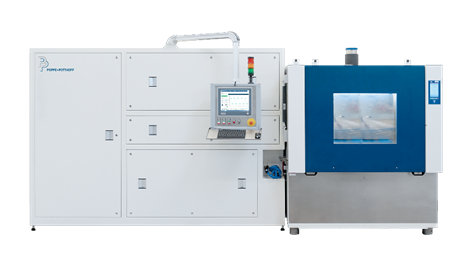Efficient cooling of server racks (colocation) is crucial for data centers in order to ensure the performance and longevity of the hardware. Liquid-cooled systems are becoming increasingly important in this respect. Poppe + Potthoff Maschinenbau (PPM) develops test benches to examine and optimize the quality of cooling components and systems.
According to current forecasts by the International Energy Agency (IEA), data centers will consume more than 800 terawatt hours of energy worldwide by 2026 - more than twice as much as in 2022. Liquid cooling systems help to improve power usage effectiveness (PUE). They are up to 40% more efficient than conventional air cooling and make a significant contribution to reducing energy consumption and costs.
Direct liquid cooling (DLC)
DLC systems are considered to be particularly efficient. The coolant is in direct contact with heat-generating components in the server rack, which ensures very effective heat dissipation. This method enables high-density data centers, as DLC systems are very compact. As they can cope with higher temperatures than air cooling, fewer fans are required. This not only reduces power consumption and costs, but also noise pollution.
Leakage-free from the CDU to the cold plate?
To prevent damage caused by leaks, all media-carrying components of the DLC system must meet the highest requirements in terms of strength and tightness - also with changing pressures and temperatures. These include the coolant distribution units (CDU), connectors, valves, lines and the cooling plates, inside which the coolant circulates through microchannels. These are installed directly above the heat-producing components such as CPUs and GPUs.
Test benches from Poppe + Potthoff Maschinenbau
To test the mechanical strength and tightness of DLC components and systems, the German company PPM offers test benches for burst and leak tests up to 70 bar (1100 psi) as well as dynamic pressure pulsation tests of up to 20 bar (290 psi). Higher pressures and water hammer tests can also be realized. With sinusoidal and trapezoidal curves in frequencies of up to 2 Hz, all operating conditions can be comprehensively simulated over the service life.
Validation under real conditions
Testing is carried out with water-glycol emulsions or other coolants such as PG25. The media and ambient temperatures in the temperature-controlled test chambers usually vary between -20°C and +90°C (-4°F to +194°F). The simulation of real operating conditions in PPM's test benches makes it possible to minimize failure risks and costs and to ensure optimum performance of all components of the cooling system in interaction.




